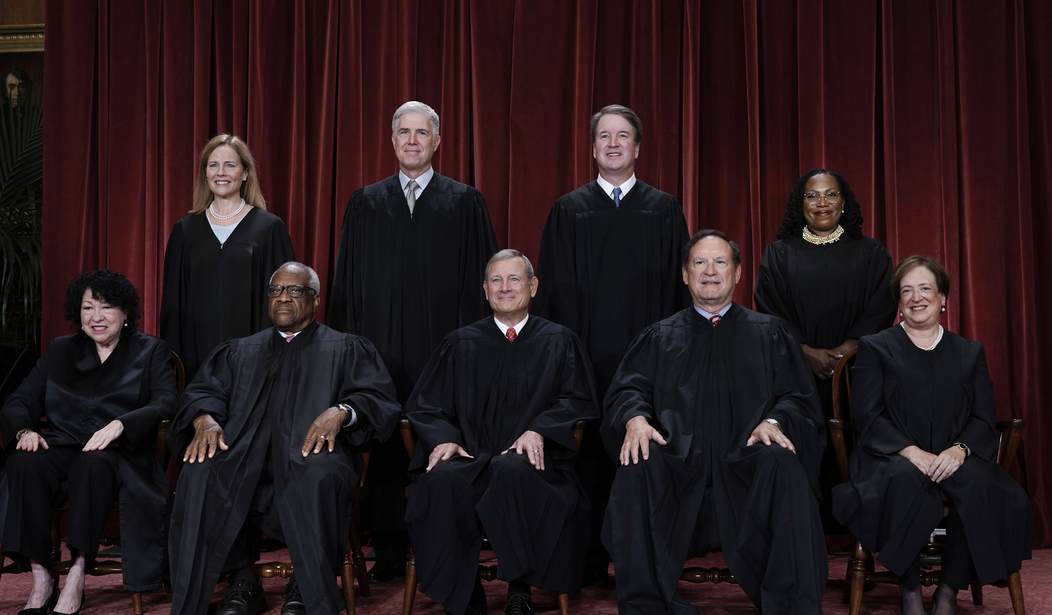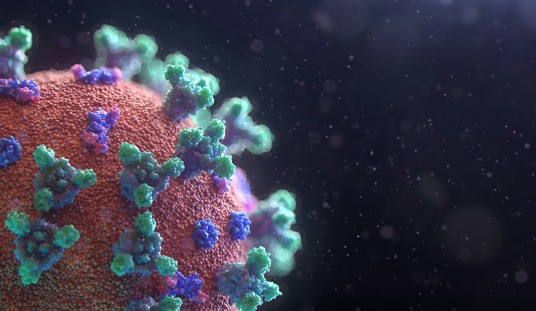A couple of interesting articles were published over the last week detailing the issues the liberal faction of the Supreme Court has encountered in working together to accomplish much of anything. We on the right are often left wondering how Chief Justice John Roberts, Justice Neil Gorsuch, and Justice Amy Coney Barrett will disappoint on various crucial cases, and we assume the liberals will vote in lockstep. As it turns out, the three liberals seem to have very different ideas on how they should proceed as a minority. The articles are At the Supreme Court, Liberal Justices Are Split - The New York Times which The New York Times paired with The Debate Dividing the Supreme Court’s Liberal Justices - The New York Times. One is a deep dive into reporting on the Supreme Court, and the other is an in-house interview with that reporter.
This is the way that the NYT's Jodi Kantor describes the dynamic.
Justice Kagan, appointed in 2010 to be a diplomat and strategist, is capable of punching hard, but she shows her frustration only in flashes. When the court rejected President Biden’s student loan cancellations in 2023, she deleted the most heated material from her dissent, I learned in my reporting. Justice Jackson aims directly at the right side of the court, accusing them of being clueless about racism, favoring “moneyed interests” and enabling “our collective demise.”
This has led to tension — between Jackson and the two senior liberals, and between Jackson and the rest of the court.
...
[Sotomayor] is now the senior liberal, assigning dissents and keeping many of the most important ones for herself. In those, Sotomayor disagrees forcefully, but she also values her long relationships at the court, people close to her say, and mostly keeps her focus on the legal judgments.
Kagan, according to the reporting, is an intellectual and dealmaker. Her champion on the Court was the late Justice Antonin Scalia, who didn't agree with her but respected her intellect and work ethic. When a conservative bolts to the liberal side of a decision, the person who lured them there is more than likely Kagan.
Sotomayor is a results-oriented justice. She doesn't care so much about the law and precedent as she does about impact. But she is a believer in the institution and has close personal relationships with some of the conservative justices.
The hero of the story is Justice Ketanji Brown Jackson.
The jurist who got the job had two Harvard degrees but also a history of challenging power. In 1990, when Justice Jackson was an undergraduate, she wore black instead of crimson to the Harvard-Yale football game to take a stand against a lack of full-time professors in the Afro-American studies department. “We can embarrass the university in front of the alumni,” she told The Boston Globe at the time.
As a clerk, she worked at a Supreme Court with plenty of Black building workers but where only a handful of Black lawyers had reached the elite legal apprenticeship. Later, she worked as a public defender — a representative of the accused and the shunned.
Her appointment as the first Black female justice was “a refutation of past ignominies, a long-anticipated and highly celebrated national achievement,” she wrote in her memoir. But inside the court, she was the junior justice, assigned to tasks like serving on the cafeteria committee and answering the door to the justices’ private conference room in case of a knock. In those meetings, Justice Jackson spoke only after the others, meaning that unless there was a tie, she had the least influence.
The interview makes it clear that the junior justice always has the duties in the last paragraph, but the article pairs it with the "refutation of past ignominies" nonsense to nearly make it seem as though she is being singled out for demeaning duties.
It is the clash between Barrett and Jackson that crystallizes the difference between Brown, her liberal colleagues, and the Court majority.
All of this came to a head in one case in June. In Trump v. Casa, the court limited the power of lower court judges to issue nationwide rulings, in one stroke diminishing the power of the judiciary to challenge Mr. Trump. Justice Barrett wrote the 6-to-3 majority opinion. Justice Sotomayor pushed back with a full-throated dissent: “The court’s decision is nothing less than an open invitation for the government to bypass the Constitution,” she wrote. Justice Jackson joined that opinion.
But she added an even more dire solo dissent. “Eventually, executive power will become completely uncontainable, and our beloved constitutional Republic will be no more,” she wrote, and signed off “with deep disillusionment, I dissent.” It sounded like a message: I am losing faith in the Supreme Court.
Justice Barrett hit back hard, calling her argument “at odds with more than two centuries’ worth of precedent, not to mention the Constitution itself.”
Defenders argue that Brown insists on writing solo opinions that irritate her colleagues and do nothing to advance the law, thereby engaging in “public education from the bench.”
Empirical data bear out her verbosity.
Words spoken by new Supreme Court Justices:
— The Rabbit Hole (@TheRabbitHole84) June 25, 2025
- Female justices spoke more than male justices.
- KBJ spoke more than all male justices combined. pic.twitter.com/u9kWpPy6rN
I have two parallel theories. First, she is an attention hog. The "me, me, me" focus is evident from her Harvard graduation to her long-winded and somewhat deranged opinions. Her interest isn't educating the public on the law; it is in educating the press on who she is and why she's important. She isn't interested in building a voting bloc because then she couldn't grandstand and collect "brave and bold" op-eds.
My second theory is the one I fear most. The Court can survive a rude, loudmouthed, attention-seeker. What it can't survive is someone hostile to the institution. For all of the criticism we level at Chief Justice Roberts, he is keenly aware that the Supreme Court only functions because the two real branches of government and the people respect it. Otherwise, we are in the realm of "John Marshall has made his decision; now let him enforce it."
I think Brown's self-appointed role on the Supreme Court comes straight out of Saul Alinsky's rules for radicals. She is not interested in a collegial relationship with other justices. She is interested in demeaning them (see her “let‑them‑eat‑cake obliviousness" comment in the Harvard vs. Students for Fair Admissions case; BREAKING: Supreme Court Rejects Race-Based College Admissions – RedState) because people hurt, not institutions. She discredits the Court as a rubber stamp for the administration (see “Calvinball has only one rule: There are no fixed rules. We seem to have two: that one, and this administration always wins," from APHA vs NIH; One Supreme Court Justice Has Nosedived Into Irrelevance; Can You Guess Who? – RedState). She knows her views can't attract a five-vote, or maybe even a three-vote, majority, so she attacks the motives of other justices and the fairness of the process. Carrying the day is not as important as discrediting the winning decision.
Unfortunately, there is no way of excising this kind of poisonous force from the Supreme Court. We are stuck with it. We can only hope that other justices get wise to her game.
The Schumer Shutdown is here. Rather than put the American people first, Chuck Schumer and the radical Democrats forced a government shutdown for healthcare for illegals. They own this. Help us continue to report the truth about the Schumer Shutdown. Use promo code POTUS47 to get 74% off your VIP membership.














Join the conversation as a VIP Member